It’s time to go back and check on a tree I styled in September of last year. The “Other Swamp Monster” bald cypress is only called this because we have a few more in similar sizes. It’s becoming something of an inside joke here at the nursery. We had a good lot full of large collected bald cypress that have taken some time to recover, grow out, and then have their tops regrown. It’s been roughly 3-4 years since a good number of those trees have been collected and now it’s time that we’re starting to see the “fruits of our labor”. I’ve always loved that pun when describing bonsai work.
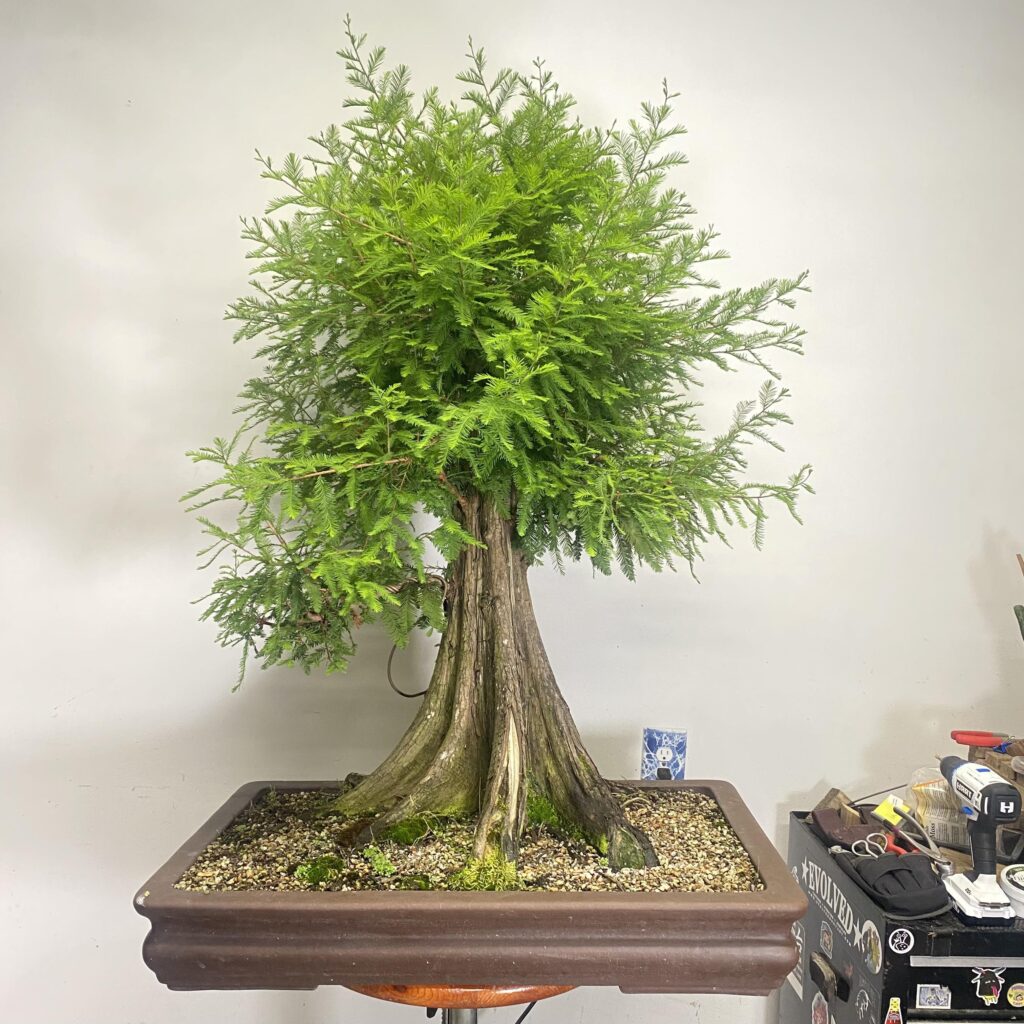
The only work I preformed on this tree over the past year was checking to make sure the wire wasn’t biting and to knock back overly vigorous growth. You can refer back to the previous post I made about this tree here.
As seen in the previous post, the tree was cut back to “primary” branching. Those branches were allowed to run (blow out) and develop. They have back budded and gave me more structure to play with. Bald cypress relentlessly bud back on their main trunks so I was able to go through and select new smaller branches to start working on proportions and scale as we work up the tree.
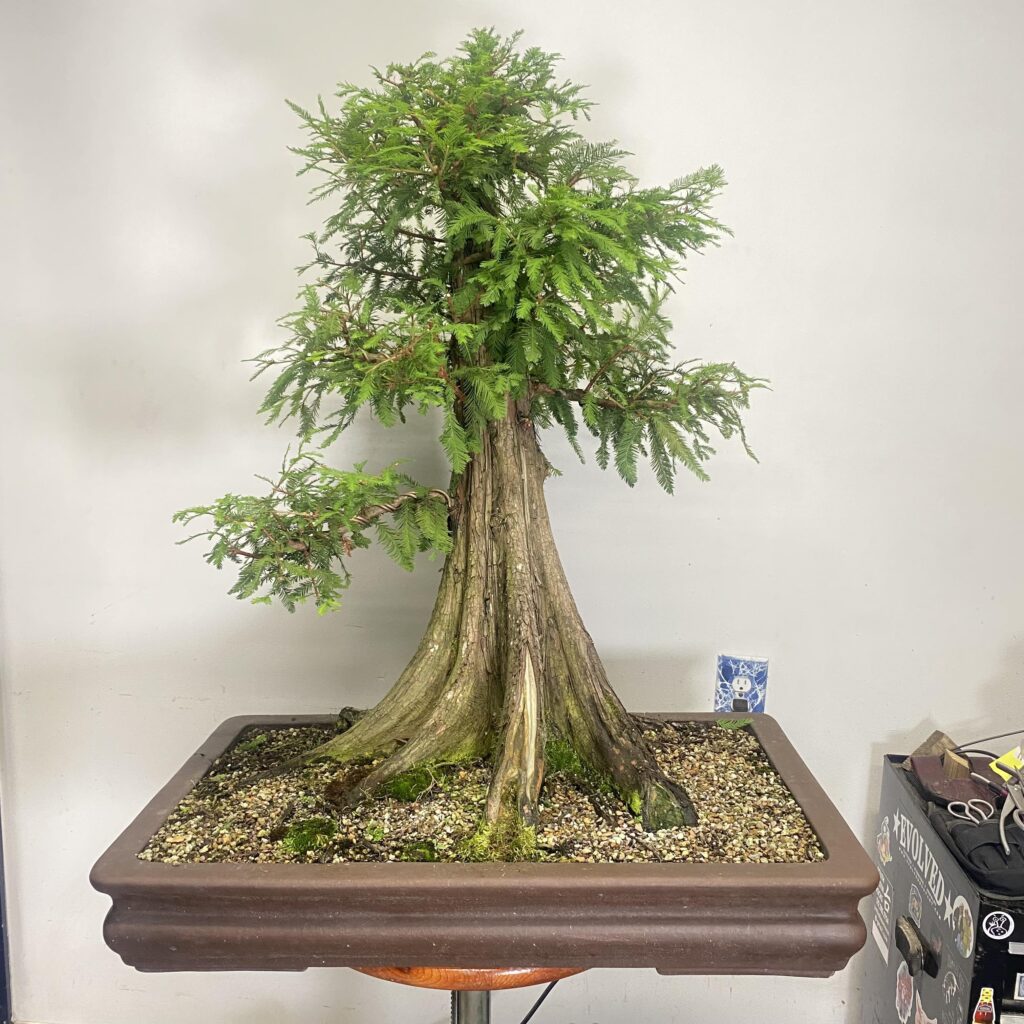
After cleaning the tree up and locating my key branches for my design I can start thinking about what the silhouette will be. It’s difficult to imagine what the tree will look like with the branches laid out and shaped in our minds but I have a few tricks to help us out. There are a few guidelines that you can use to simplify this process so it’s accessible to different types of learners.
When I say “learners” I’m referencing to the 4 types, visual, auditory, reading/writing, and kinesthetic. The best I can do with this blog is the visual and reading/writing part at the moment. You can refer to my podcast show Little Things for the auditory part. The kinesthetic is up to you, practice makes perfect!
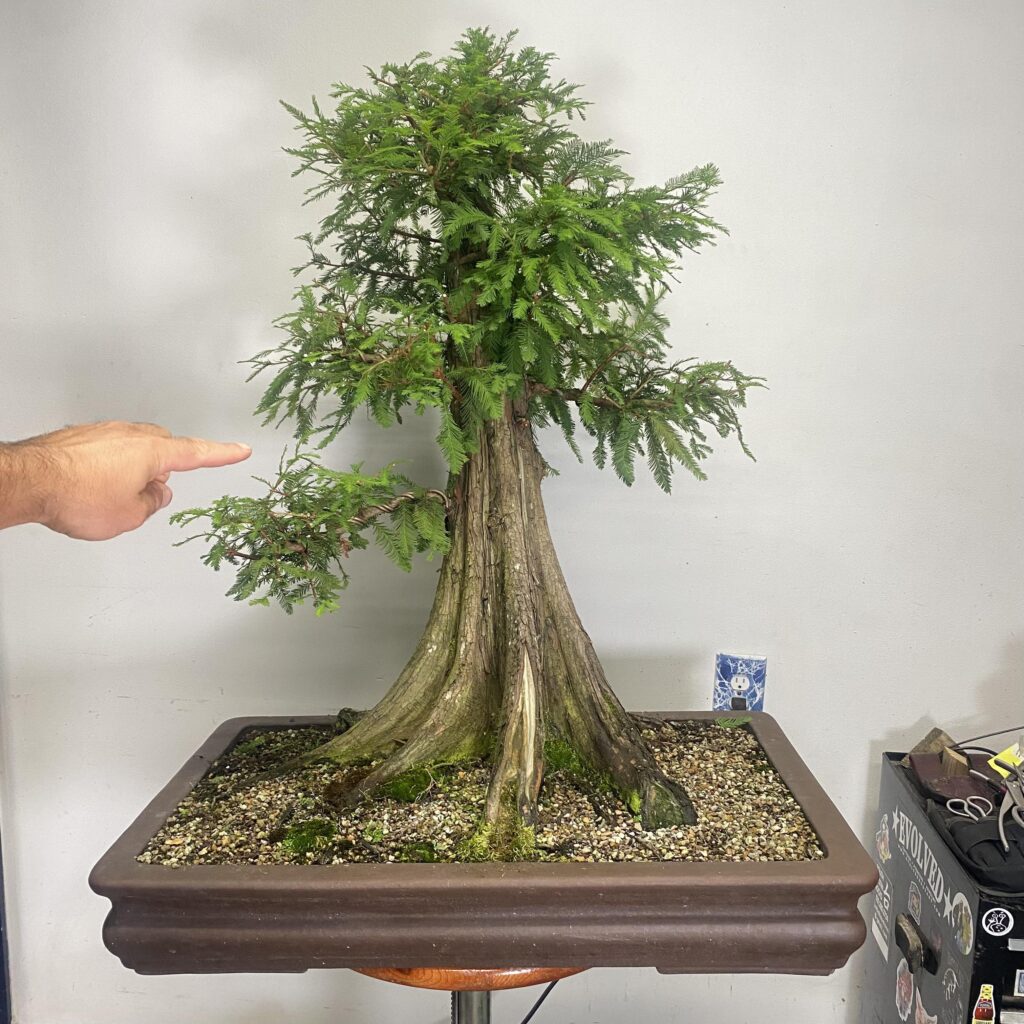
What I’m pointing to is the first and most obvious visual break in the silhouette of the tree. This tree isn’t a proper formal upright and the break, or negative space, really makes the tree feel like it’s leaning to the left of the design. It sort of is leaning but to further the embrace that movement we will need more breaks in the foliage to help viewer;s eye wander through the tree and see all the best parts.
Something I think that is over looked in bonsai design a lot is creating asymmetry in the design to enforce the movement of the tree. You can have balance in a tree and make it feel even more stable but too much balance can make the tree feel boring or unrealistic. We are trying to show a tree with great age and perseverance and a over symmetrical bonsai doesn’t tell much of a story. You can also use asymmetry with visual breaks to showcase a feature in your bonsai as well.
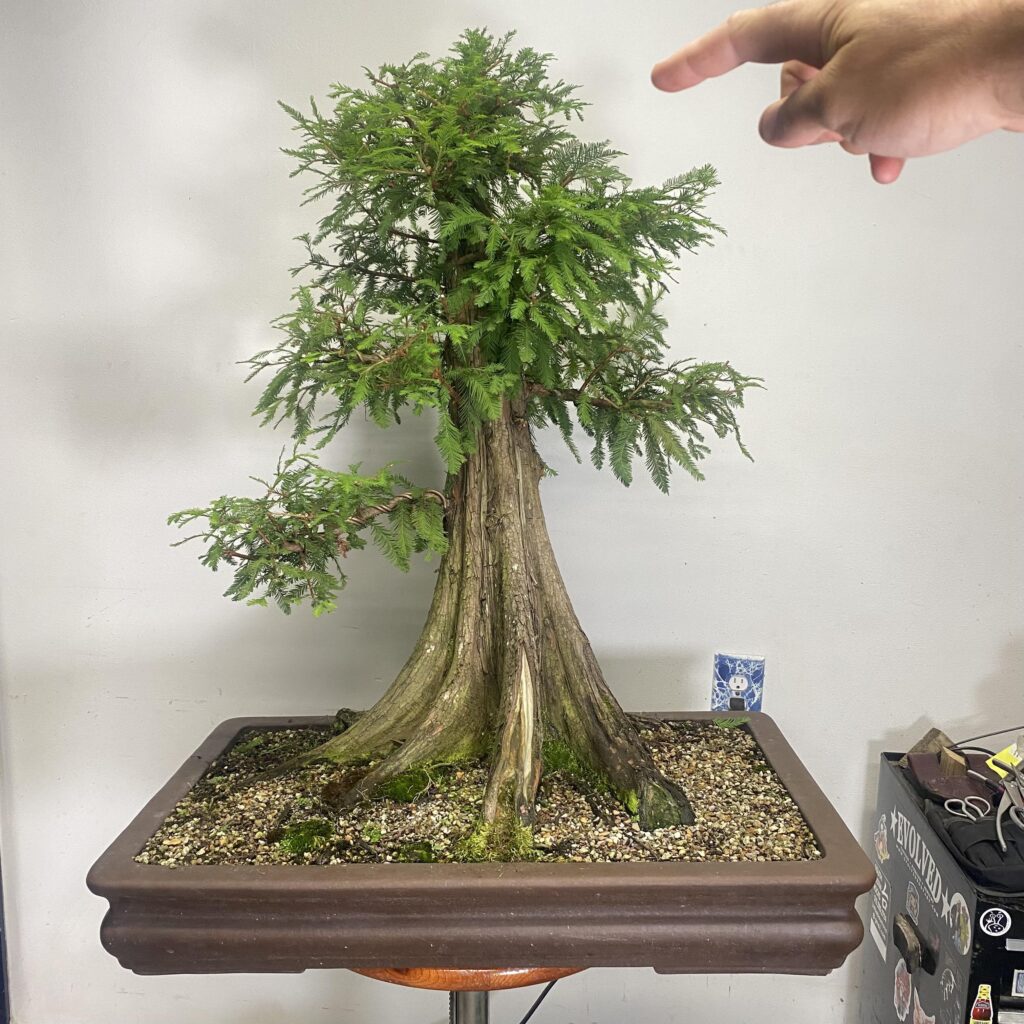
Since my tree is so tall I want to make sure there is a good amount of break up in the top part of the canopy. I want to the tree to feel tall and mighty so I will have to bring the silhouette in nice and tight around the apex. A break where I am pointing will further move the tree towards a harmonious design as well. A tree with these proportions and sense of height should feel like the top is been under a lot influenced by wind or extreme weather in the past. I’m also go for a scarless bonsai and I want the main feature to be the awesome buttresses.
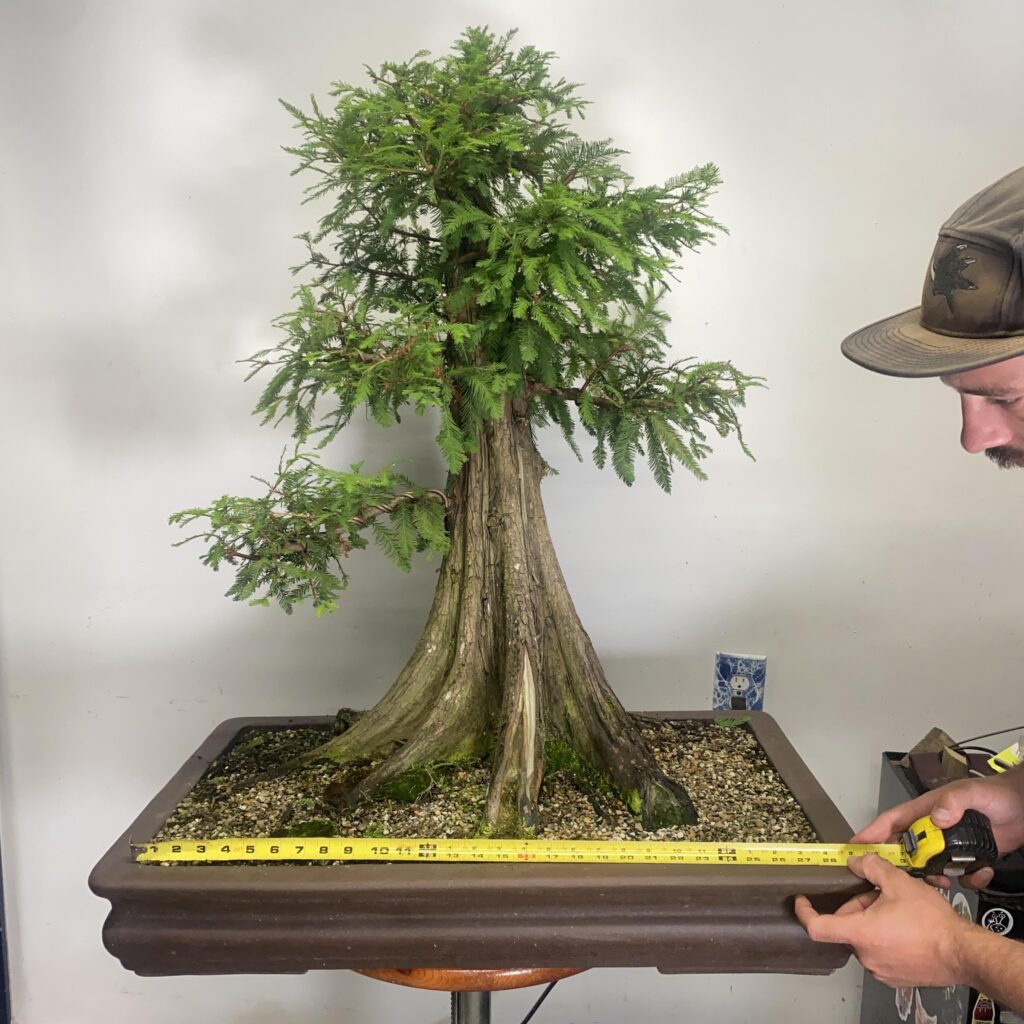
I’m showing how wide the base of this tree actually is in real life. This can give me some ratios based off of the actual measurements. The first branch is really close to the 1/3 of the height mark of this tree. I will be looking to make a tapering shape to the over tree to make the first branch and second branch make more sense. at the present time the first branch feels too low because the crown is too heavy and nothing is lining up.
I will be moving all the branches around in this design to help the viewer’s eye travel up and down the trunk line. Every branch will be wired and the branch tips will be appropriately placed. Something a good friend of mine always tells me is, “all the branch tips should be at the same angle or the tree just feels messy!”
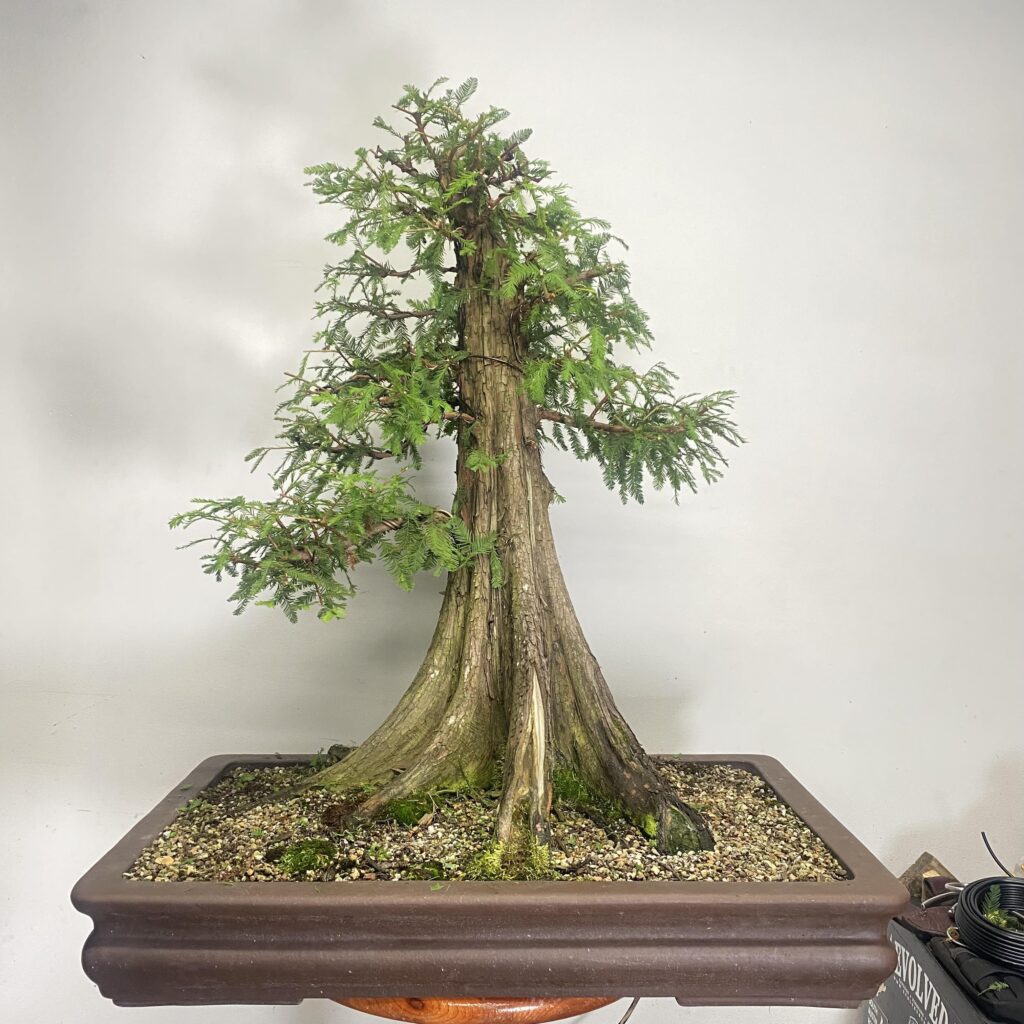
This will be the tree’s shape moving forward. I will plan to continue to cut back and start building the interior branching as time goes on. This tree has only been in training for a few years now but the future is looking a lot more promising now.
-Evan
